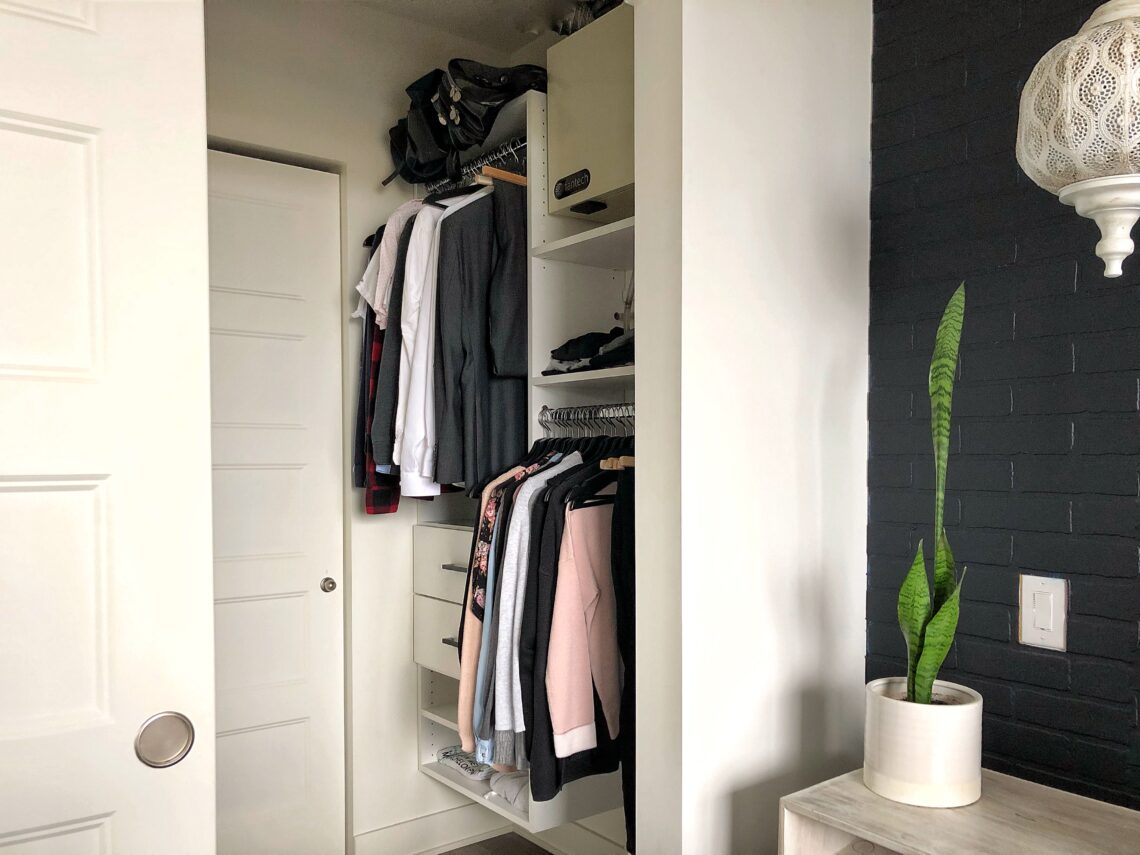
Minimalist Living: How to Make It Work
Minimalist living isn’t a fad.
It’s a fast-growing movement that focuses on simplicity, sustainability and life experiences as opposed to over-consumerism and material goods.
I found out about small space and minimalist living five years ago and I haven’t looked back since. People thought I was crazy when I decided to buy a 530 sq. ft. condo with my husband.
“Where will you go when you guys get into a fight?”
“How will you have friends and family over?”
“Where are you going to put all your clothes?”
Well, first of all, the house I grew up in wasn’t all that big, and I spent most of my time in my bedroom blasting rock music. So I’ve never felt the need to expand; I’ve always felt comfortable in smaller spaces.
Second of all, I do not need to escape to a different part of the house to get away from my husband. If we get into a fight, we have no choice but to work it out immediately.
Thirdly, I invite friends and family over all the time. We’ve come up with clever solutions like our drop-leaf dining table so we can host dinner parties whenever we want.
Lastly, I don’t have that many clothes because I’m very selective when it comes to shopping.
If you’re looking to make a change and want to try out minimalist living, here’s how you can make it work.
Think before you buy
The #1 rule of minimalist living is to think before you buy anything.
Ask yourself these questions before making a purchase:
- Do I really need this item?
- Do I love this item?
- How often will I use it? Can I borrow it instead?
- Do I already have something similar?
- Do I have space for it?
- Can I afford it?
These are the questions you need to ask yourself before you hit that “Checkout” button or before you head over to the cash register.
If it’s an impulse buy that you think you might only use a handful of times, it’s not worth it. It will just end up in the back of one of your cabinets or drawers, barely used and soon forgotten.
Another thing I like to do before buying something is to sleep on it for a week or two. If I haven’t stopped thinking about it and I really, really want or need it, then I will take the leap.
If I’ve forgotten about it in a matter of days, it confirms it wasn’t worth it to begin with.
Donate old clothes
As a rule of thumb, every time you buy a new piece of clothing, you should donate an old one.
That way you’ll reduce the clutter in your closet and you’ll be less tempted to purchase new clothes if you’re not willing to part with old ones.
If you haven’t worn something in over a year, chances are you’ll never wear it again. Don’t hold on to clothes just because you think you might wear them someday.

Think about it – how many pieces of clothing have you donated in the past that you desperately missed afterwards?
Probably none.
Clothes are just material goods and they’re not worth cluttering your home over. The solution to decluttering and organizing is not to buy or build new closets to store your clothes – it’s to donate and move on.
You can find donation bins all over the city. You can even have companies come and pick up your donations from home.
Sell or donate unused items
It’s increasingly easier to sell or donate your items thanks to the Internet.
You no longer have to publish an ad in the local newspaper or staple signs all over town (did we really used to do that?!?!).
I’ve sold countless things on Facebook Marketplace and Kijiji (Canadian version of Craigslist). All I have to do is take pictures of whatever I want to get rid of, write a short description, include a price, and voila!

I’ve been able to successfully sell light fixtures, curtains, home decor, books, shoes, and appliances.
Whatever I was unable to sell, I donated.
If you want to make space for new things in your home (or just make space, period), you’ve got to get rid of things you no longer use.
The “what if I need this in five years?” mentally just isn’t compatible with the minimalist living lifestyle.
Throw out receipts and manuals
There is no reason to keep receipts or manuals anymore.
If you own a smartphone, create a photo album for your important receipts and invoices.
I emphasize the word important, because your grocery receipts don’t count. There is no warranty on your onions.

If you make a big purchase or you buy electronics that come with a warranty, just take a picture, store it in your album and sync it to the Cloud. That way you won’t lose them, and finding them will be much easier than rummaging through 10 years worth of receipts.
As for technical manuals, most of them are available online through the manufacturer’s website. Even IKEA instructions are available on their website, so you’re all set.
Learn to say “no”
I know it’s hard to confront family and friends when they insist on bringing things over or getting you gifts, but if you want to give minimalist living a try, there’s no way around it.
Have a conversation with them about why you don’t want extra things in your home. Explain to them that you have more than enough and you’re trying to reduce clutter in your home.
For your birthday, why not suggest an activity or a night out in lieu of gifts? If your friends insist on getting you something, they can offer to pay for your meal or your share of the planned activity.
For the holidays, you can organize secret santa. That way you’ll give and receive fewer gifts.
You can even create a wish list so you get exactly what you want/need instead of something you might never end up using but feel too guilty to return or give away.
Saying “no” has nothing to do with being rude or ungrateful. It has to do with decluttering and not being wasteful, and that’s nothing to feel bad about.




